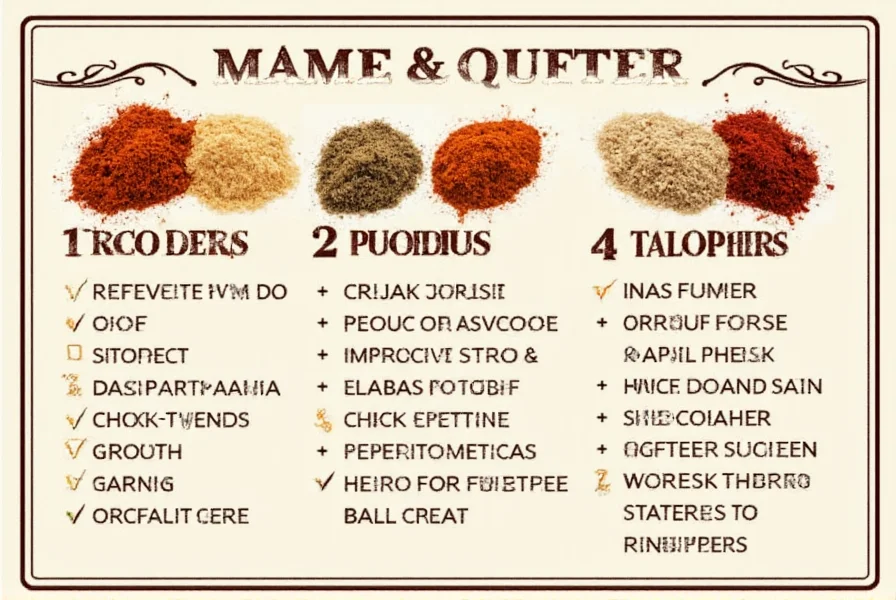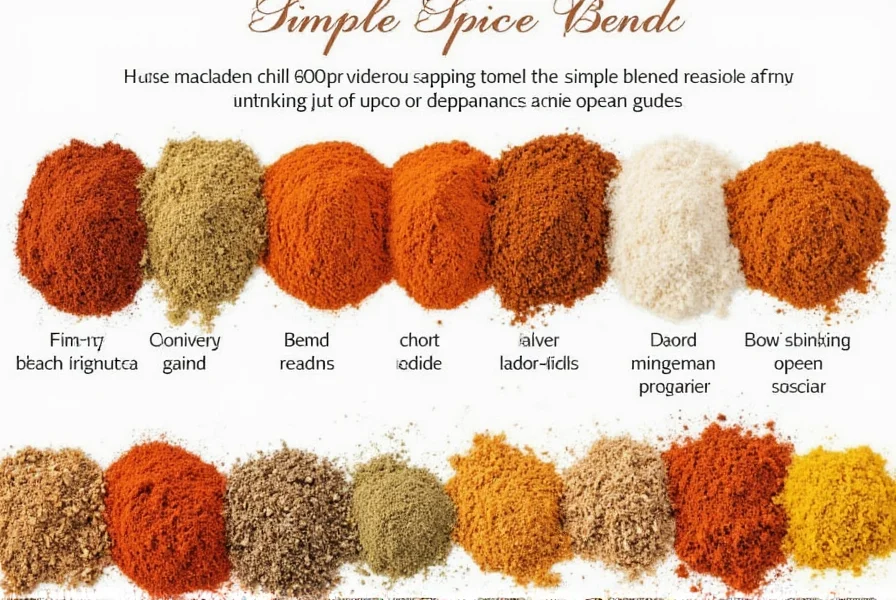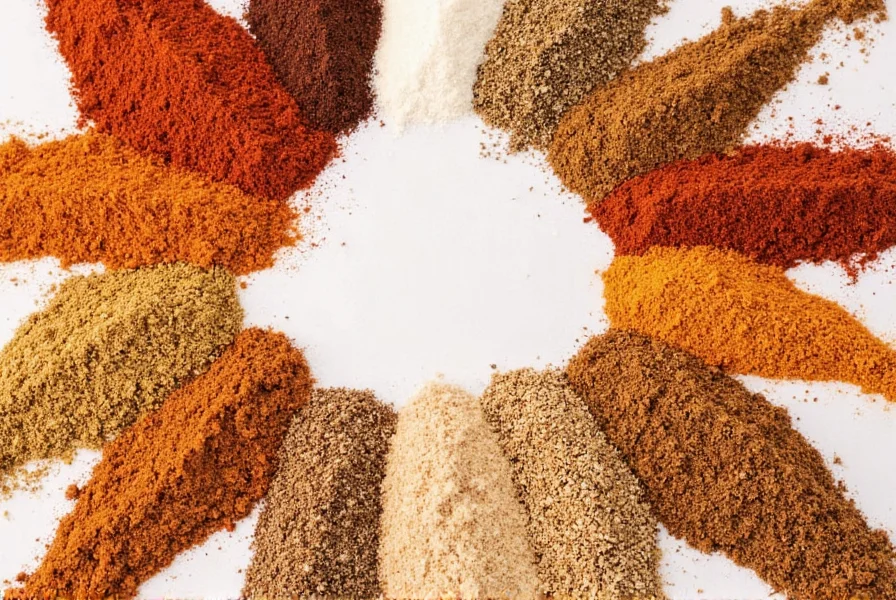Create authentic homemade chili powder by combining 2 tablespoons paprika, 1 tablespoon cumin, 2 teaspoons garlic powder, 2 teaspoons onion powder, 1 teaspoon oregano, 1/2 teaspoon cayenne, and 1/2 teaspoon black pepper. Toast whole spices first, grind to a fine powder, and store in an airtight container for maximum flavor and freshness.
Learning how to make chili powder from spices gives you complete control over flavor, heat level, and quality. Unlike store-bought versions that often contain fillers or anti-caking agents, homemade chili powder delivers vibrant, fresh taste that elevates any dish. This guide provides everything you need to create custom blends that suit your personal taste preferences and cooking needs.
Why Make Your Own Chili Powder
Commercial chili powders frequently include additives like silicon dioxide to prevent clumping. When you make chili powder from spices at home, you avoid these unnecessary ingredients while enjoying significantly fresher flavor. Whole spices retain their essential oils and compounds much longer than pre-ground versions, which begin losing potency within 6 months. The process of toasting and grinding your own spices unlocks complex flavor profiles you simply can't get from mass-produced alternatives.
Essential Spices for Homemade Chili Powder
The foundation of any quality chili powder blend consists of these core spices. For best results, purchase whole spices and grind them yourself rather than using pre-ground versions.
| Spice | Primary Flavor Contribution | Whole Form Recommendation |
|---|---|---|
| Ancho chili peppers | Rich, fruity, mild heat | Dried whole peppers (soak before use) |
| Guajillo chili peppers | Berry-like, tangy, medium heat | Dried whole peppers |
| Cumin seeds | Earthy, warm, distinctive | Whole seeds (toast before grinding) |
| Garlic | Pungent, savory depth | Fresh garlic (dehydrate) or garlic flakes |
| Oregano | Herbal, slightly bitter | Mexican oregano preferred |
Step-by-Step Guide to Making Chili Powder
1. Prepare Your Spices
For optimal flavor, start with whole spices rather than pre-ground. If using dried chilies, remove stems and seeds. For maximum freshness, toast whole spices (except dried chilies) in a dry skillet over medium-low heat for 1-2 minutes until fragrant. Let all ingredients cool completely before grinding.
2. Dehydrate if Necessary
If you're using fresh ingredients like garlic or peppers, dehydrate them first. Arrange on a baking sheet and dry in an oven at the lowest setting (170°F/75°C) for 6-8 hours until completely brittle. Alternatively, use a food dehydrator following manufacturer instructions.

3. Grind to Perfect Consistency
Process your prepared spices in a high-speed blender, spice grinder, or traditional molcajete (Mexican mortar and pestle). For the finest powder, grind in small batches. If using dried chilies, process them separately first, then add other spices. Continue grinding until you achieve a fine, uniform powder with no visible chunks.
4. Sift and Re-grind if Needed
Pass your ground mixture through a fine mesh sieve. Return any larger particles to your grinder and process again. This extra step ensures a smooth texture that won't leave gritty bits in your dishes.
5. Store Properly
Transfer your homemade chili powder to an airtight glass container away from light and heat. Properly stored, it maintains peak flavor for 4-6 months. For extended shelf life, keep in the freezer where it stays fresh for up to a year.
Customizing Your Chili Powder Blend
One of the greatest advantages of learning how to make chili powder from spices is customization. Adjust these elements to create your perfect blend:
- Heat level: Increase cayenne or add hotter peppers like arbol for more fire
- Smokiness: Include 1-2 chipotle peppers for a deep, smoky dimension
- Sweetness: Add a pinch of cinnamon or allspice for complexity
- Earthiness: Increase cumin proportion for more traditional flavor
When developing your signature blend, start with a base recipe, then adjust one element at a time. Keep detailed notes of your proportions so you can recreate successful batches. Remember that flavors meld and intensify over the first week of storage.
Troubleshooting Common Issues
Problem: Powder has inconsistent texture
Solution: Always sift after grinding and re-process larger particles. A coffee grinder dedicated to spices works better than standard blenders for achieving fine consistency.
Problem: Flavor seems flat or one-dimensional
Solution: Ensure you're toasting whole spices before grinding. The Maillard reaction during toasting develops complex flavor compounds that elevate your blend.
Problem: Powder clumps during storage
Solution: Add 1-2 uncooked white rice grains to the container. They'll absorb excess moisture without affecting flavor.

Using Your Homemade Chili Powder
Your custom chili powder works perfectly in traditional chili recipes, but don't limit yourself. Use it to season:
- Rub for meats before grilling or roasting
- Base for homemade taco seasoning
- Flavor boost in soups and stews
- Seasoning for roasted vegetables
- Ingredient in marinades and salad dressings
When substituting your homemade version for store-bought in recipes, start with slightly less (about 20% reduction) as fresh-ground spices have more intense flavor. Adjust to taste as your dish cooks.
Frequently Asked Questions
Can I make chili powder without a spice grinder?
Yes, you can make chili powder without specialized equipment. For dried chilies, toast them gently then pound in a mortar and pestle until fine. For seeds and other hard spices, crush them first with the bottom of a heavy glass or skillet before grinding. While not as fine as machine-ground powder, this traditional method still produces excellent flavor.
How long does homemade chili powder last compared to store-bought?
Homemade chili powder typically stays fresh for 4-6 months when stored properly in an airtight container away from light and heat. This is shorter than commercial versions (which often last 18-24 months) because it lacks preservatives and anti-caking agents. For maximum shelf life, store your homemade blend in the freezer where it maintains quality for up to one year.
What's the difference between chili powder and chili seasoning?
Chili powder refers specifically to ground dried chili peppers, while chili seasoning (or chili powder blend) includes additional spices like cumin, garlic powder, and oregano. When you learn how to make chili powder from spices, you're actually creating a complete seasoning blend. True single-ingredient chili powder is less common in home cooking but can be made by grinding just dried chili peppers.
Can I adjust the heat level in my homemade chili powder?
Absolutely. One major advantage of making your own chili powder is complete control over heat level. Use milder peppers like ancho for family-friendly blends, or add hotter varieties like cayenne, arbol, or habanero for more fire. Remember that removing seeds and membranes from fresh peppers significantly reduces heat. Start with smaller amounts of hot peppers and gradually increase until you reach your preferred spice level.











 浙公网安备
33010002000092号
浙公网安备
33010002000092号 浙B2-20120091-4
浙B2-20120091-4